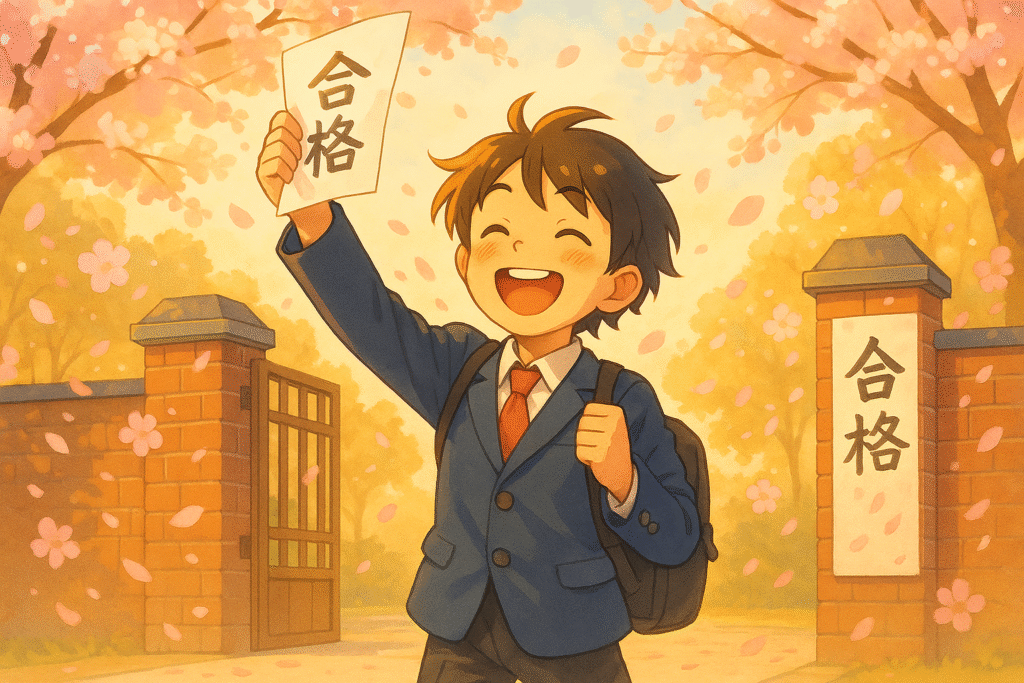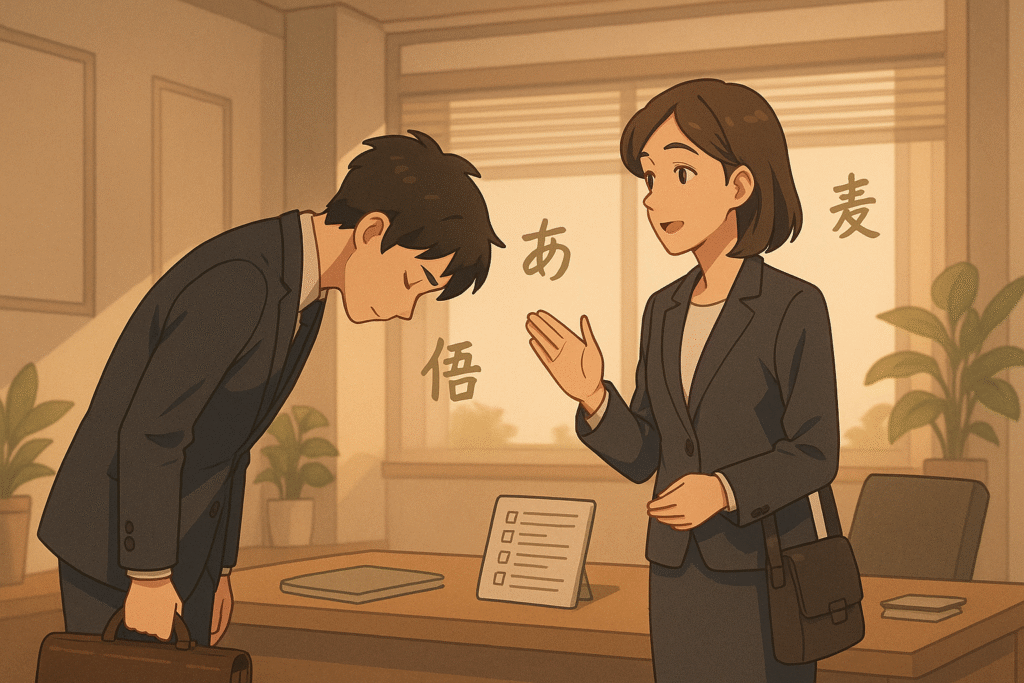Wondering about the true meaning of “sayonara in Japanese” and when to actually use it? Many Japanese learners are surprised to discover that this common farewell isn’t used as frequently as they might think! In this guide, we’ll explore the cultural nuances of sayonara, reveal when Japanese people really use it, and share more natural alternatives for your everyday conversations.
The True Meaning of Sayonara in Japanese
When most beginners learn Japanese, “さようなら” (sayonara) is often one of the first words introduced for “goodbye.” However, there’s an important cultural context that many textbooks don’t explain clearly.
Sayonara (さようなら) originates from the phrase “さようならば” (sayou naraba), which essentially means “if that’s how it must be.” This etymology reveals why sayonara carries a sense of finality or long-term separation in Japanese culture.
In reality, sayonara in Japanese conveys a much stronger farewell than the casual “goodbye” in English. It suggests a significant parting—something closer to “farewell” than a simple “see you later.” This weight of finality makes native speakers hesitant to use it in everyday situations.
The Emotional Weight Behind Sayonara
Saying “sayonara in Japanese” can sometimes feel overly dramatic or even cold in certain contexts. Consider these situations:
- When leaving home in the morning: Using sayonara to family members might sound like you don’t plan to return!
- With close friends: Saying sayonara to friends after hanging out might unintentionally suggest distancing yourself from the relationship.
As our article on expressing emotions in Japanese explains, the Japanese language often conveys subtle emotional nuances that aren’t immediately obvious to learners.
When Is Sayonara Actually Used?
Despite its dramatic connotations, there are specific scenarios where sayonara in Japanese is appropriate and commonly used:
1. Long-Term Separations
Sayonara fits perfectly when:
- Moving to another city or country: When relocating for work or studies
- Graduation ceremonies: When students and teachers part ways
- End of significant life chapters: Like retirement or career changes
2. Formal or Institutional Settings
Sayonara can be appropriate in certain structured environments:
- End of class or school day: Teachers and students often use sayonara when concluding lessons
- Formal events or ceremonies: As a closing farewell at official gatherings
- Business relationships: When a project concludes or business partnership ends
3. With Acquaintances or Distant Relationships
- Neighbors or casual acquaintances: When there’s no expectation of seeing each other regularly
- Brief encounters with strangers: After short, pleasant interactions
Want to explore Japan’s culture?
Discover Japan’s rich culture, traditions, and hidden gems with our expertly crafted guides. Get insider tips on travel, food, and history. All for free!
Better Alternatives to Sayonara for Daily Use
For everyday situations, Japanese people rarely use sayonara. Instead, consider these more natural alternatives:
Casual Goodbyes Among Friends
| Japanese | Romaji | English Equivalent | Usage Context |
|---|---|---|---|
| じゃあね | Jaa ne | See you! | Very casual, among close friends |
| またね | Mata ne | See you again! | Friendly, implies meeting again soon |
| バイバイ | Bai bai | Bye-bye! | Casual, especially popular with younger people |
| じゃあ、また | Jaa, mata | Well then, see you! | Casual but slightly more polite |
Example: When leaving after lunch with friends: “楽しかったよ、またね!” (Tanoshikatta yo, mata ne!) “That was fun, see you again!”
Formal and Business Situations
| Japanese | Romaji | English Equivalent | Usage Context |
|---|---|---|---|
| 失礼します | Shitsurei shimasu | Excuse me (for leaving) | When leaving a room or meeting |
| お先に失礼します | Osaki ni shitsurei shimasu | Excuse me for leaving before you | When leaving work before colleagues |
| お疲れ様でした | Otsukaresama deshita | Thank you for your hard work | End of workday or project |
Example: When leaving the office: “今日の会議ありがとうございました。お先に失礼します。” (Kyou no kaigi arigatou gozaimashita. Osaki ni shitsurei shimasu.) “Thank you for today’s meeting. Please excuse me for leaving.”
Cultural Body Language When Saying Goodbye
In Japanese culture, how you say goodbye is just as important as the words you use. Your body language significantly impacts the impression you leave:
- The Bow: The depth and duration of your bow communicate respect and formality
- Eye Contact: Moderate eye contact shows attentiveness without appearing aggressive
- Hand Gestures: In casual settings, a wave is acceptable; in formal settings, keep hand movements minimal
As we explored in our guide to Japanese lucky symbols, non-verbal communication carries significant cultural weight in Japan.
Tips for Mastering Japanese Farewells
- Listen and observe: Pay attention to how native speakers say goodbye in different contexts
- Consider the relationship: Your connection to the other person determines the appropriate farewell
- Match the situation: The formality of the setting influences which goodbye to choose
- Practice regularly: Use these phrases in daily conversations to build natural fluency
If you’re serious about mastering Japanese expressions like these, our JLPT N5 Study Guide provides a comprehensive approach to building foundational Japanese skills, including proper usage of everyday phrases and cultural contexts.
Real-Life Example: A Day of Japanese Goodbyes
Imagine experiencing these different farewells throughout your day in Japan:
Morning at home: “行ってきます!” (Itte kimasu!) – “I’m off!” [You say this leaving home] “行ってらっしゃい!” (Itte rasshai!) – “Have a good day!” [Family responds]
Leaving the office: “お先に失礼します。” (Osaki ni shitsurei shimasu.) – “Excuse me for leaving before you.”
Parting with friends after dinner: “楽しかった!じゃあね!” (Tanoshikatta! Jaa ne!) – “That was fun! See you!”
Saying goodbye to a neighbor: “では、また。” (Dewa, mata.) – “Well then, see you again.”
Notice how “sayonara in Japanese” doesn’t appear in these everyday interactions!
Why Understanding Sayonara Matters
As we’ve explored in our article on expressing peace in Japanese, language reflects cultural values. The limited use of sayonara reflects the Japanese preference for open-ended relationships and the cultural value placed on maintaining connections.
Learning when to use—and when not to use—sayonara in Japanese will help you communicate more naturally and avoid unintentionally suggesting permanent separation when you simply mean “see you later.”
Conclusion
Sayonara in Japanese is more than just a goodbye—it’s a cultural concept that carries emotional weight and context. While it’s perfectly appropriate in specific situations involving significant partings, for everyday farewells, Japanese people prefer lighter expressions that imply future meetings.
By choosing the right farewell for each situation, you’ll demonstrate cultural awareness and build stronger connections with Japanese speakers. Remember that in Japanese, the most appropriate goodbye is often one that suggests you’ll meet again soon!
Frequently Asked Questions
What does sayonara mean in Japanese?
Sayonara means goodbye in Japanese, but specifically implies a long-term or significant farewell rather than casual parting.
When should you not use sayonara?
You should not use sayonara with family members when leaving for the day, with close friends after casual meetings, or in any situation where you’ll see the person again soon.
What’s the most common way to say goodbye in Japanese?
The most common way to say goodbye in Japanese for casual situations is “じゃあね” (jaa ne) or “またね” (mata ne), which both suggest seeing each other again soon.
Is sayonara a sad word?
Yes, sayonara can have sad connotations as it implies a significant or long-term separation, making it inappropriate for routine daily goodbyes.
What’s a formal way to say goodbye in Japanese?
A formal way to say goodbye in business settings is “失礼します” (shitsurei shimasu), which politely excuses yourself when leaving.
Can I say sayonara to my Japanese teacher after class?
While sometimes used in educational settings, a more appropriate phrase would be “お疲れ様でした” (otsukaresama deshita) to thank them for their work, or “ありがとうございました” (arigatou gozaimashita) to express gratitude.
Ready to master Japanese greetings and much more? Check out our comprehensive JLPT N5 Study Guide to build a solid foundation in Japanese language and culture!
Love Japan? Stay in the Loop!
Get the best of Japan straight to your inbox: language, culture & travel insights!




